Honda’s New E-Clutch
Offers potential new rider aids such as automated launch control with Honda’s New E-Clutch
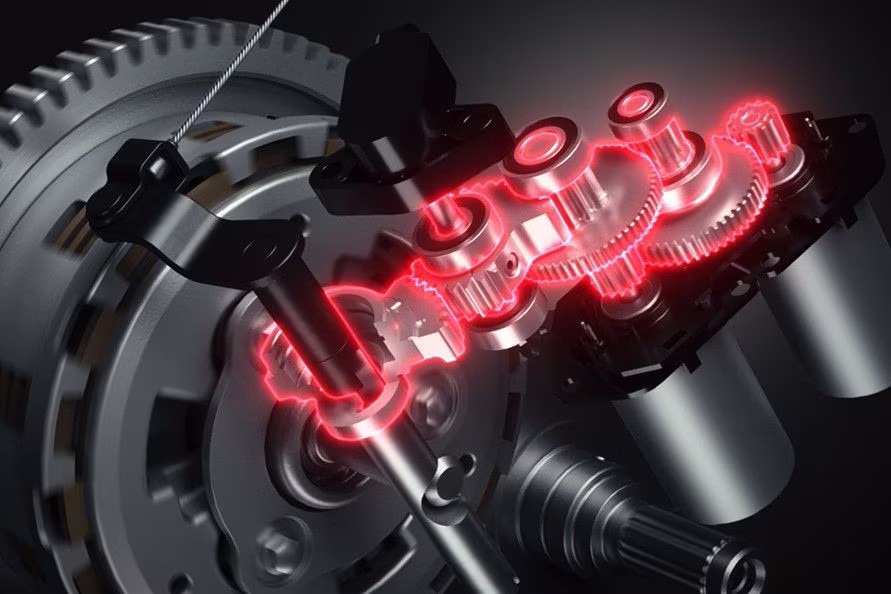
Honda is very close to bringing its E-Clutch to production. The ECU-controlled system uses a pair of motors to engage and disengage the clutch directly on the clutch-release shaft.Honda
Whenever new technology is added to motorcycles it tends to spark division between those who accept a step forward with open arms and riders who lament the onslaught of additional complexity and the potential unreliability it brings. Honda’s new E-Clutch—set to appear soon on production models—aims to skirt that problem by introducing the ability to completely automate the clutch of almost any bike without interfering with conventional mechanical components we’re all used to.
Don’t like the idea of computer interference? You can turn it off, and because the original mechanical linkage remains, the clutch will still operate as normal. The same applies in the event of an electrical or component failure in the system. But when it’s working the Honda E-Clutch promises a wide array of possibilities, ranging from the ability to make a conventional bike into a semi-automatic to adding advanced launch-control and anti-stall features.
Although Honda has announced the E-Clutch, the company has officially remained quiet about precisely how it works and what models it will be fitted to. Fortunately, we’ve found a host of patents that describe the system’s mechanical and electronic design, and the limited images that Honda has released already give big clues to the bikes that will be first to get the system.
Officially, Honda says the E-Clutch “uses electronic-control technology to provide instantaneous, fine-tuned clutch control for optimum performance in situations where the driving force changes, such as starting, shifting gears, and stopping, to achieve smooth starting, shifting gears, and stopping more natural than a rider’s manual clutch operation.
To meet a wide range of rider demands, the clutch can be operated like a normal manual motorcycle gripping the clutch lever, even when the clutch is controlled electronically.”
The company also says only that it “plans to apply Honda E-Clutch to its ‘fun’ motorcycle models over time.”
A close inspection of the photos and video released with the announcement reveals that the bike used for those pictures and footage is an updated CB650R. The casting shapes and bolt pattern around the clutch cover is a giveaway, and the standard frame of the current CB650R is also visible in some shots. Bar-mounted mirrors show it isn’t the CBR650R, but the same images also show new control pods on the bars and a full-color TFT dash that aren’t present on the current CB650R, confirming there are other updates coming as well as the E-Clutch.
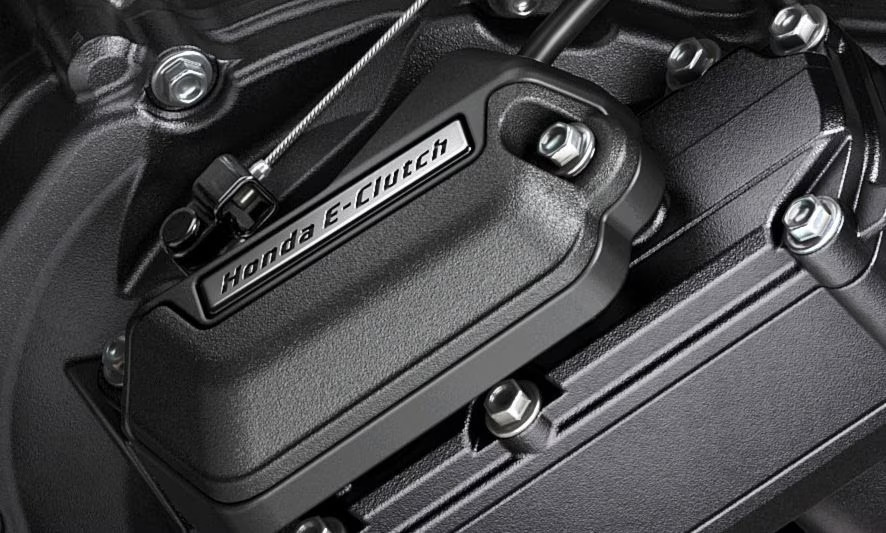
The external view of the clutch cover with the E-Clutch mechanisms underneath.Honda
However, the patents filed around the system reveal that it would be simple to fit the E-Clutch to any bike with a conventional cable or hydraulic clutch, all without any major changes apart from a new clutch cover to hold the E-Clutch system, plus an ECU to interface with the bike’s other electronics.
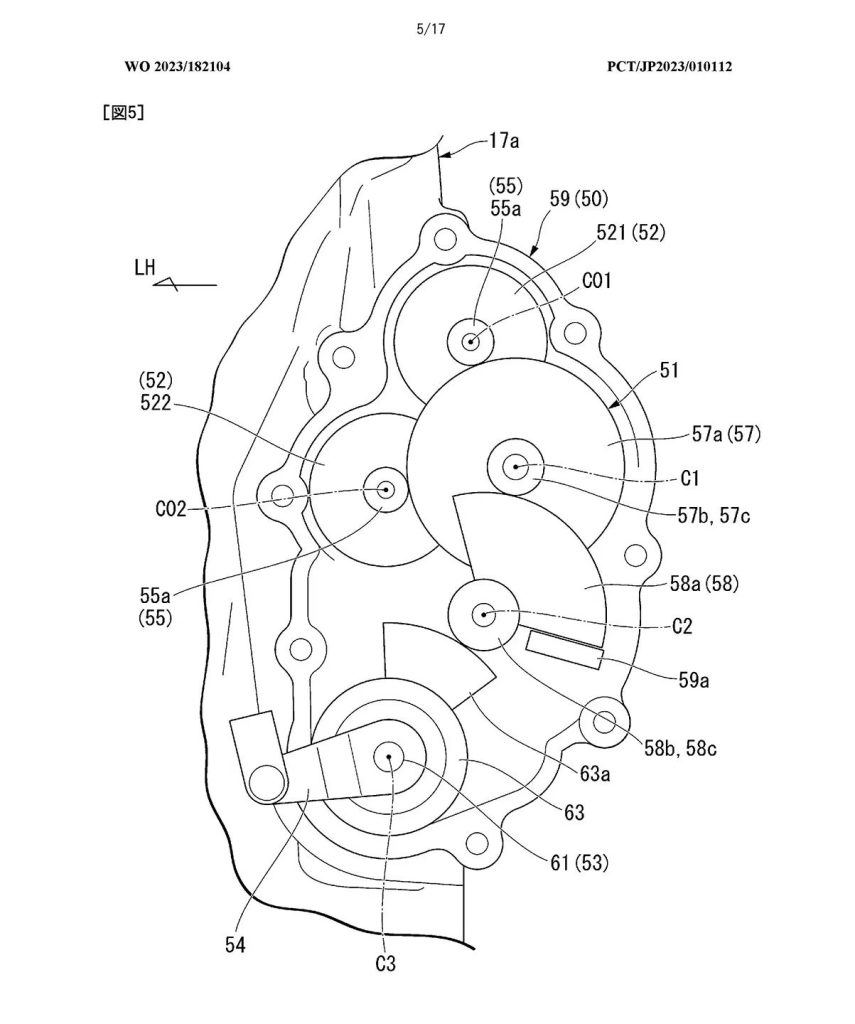
This illustration shows how the reduction and sector gears are laid out.Honda
Mechanically, the E-Clutch uses two electric motors geared together onto a set of reduction gears, all mounted in a pod attached to the clutch cover. Two motors appear to be used instead of one simply to keep the unit slim, so it doesn’t protrude too far from the cover on the side of the engine. The reduction gears are connected to sector gears that, in turn, act on the same clutch release shaft that the conventional, bar-mounted clutch lever is connected to (by a cable, in the case of the CB650R). The final sector gear acts on the release shaft via a cam that allows the manual clutch lever on the bar to override the electronic system. So when the electronics are turned off, the clutch operates as a conventional unit.
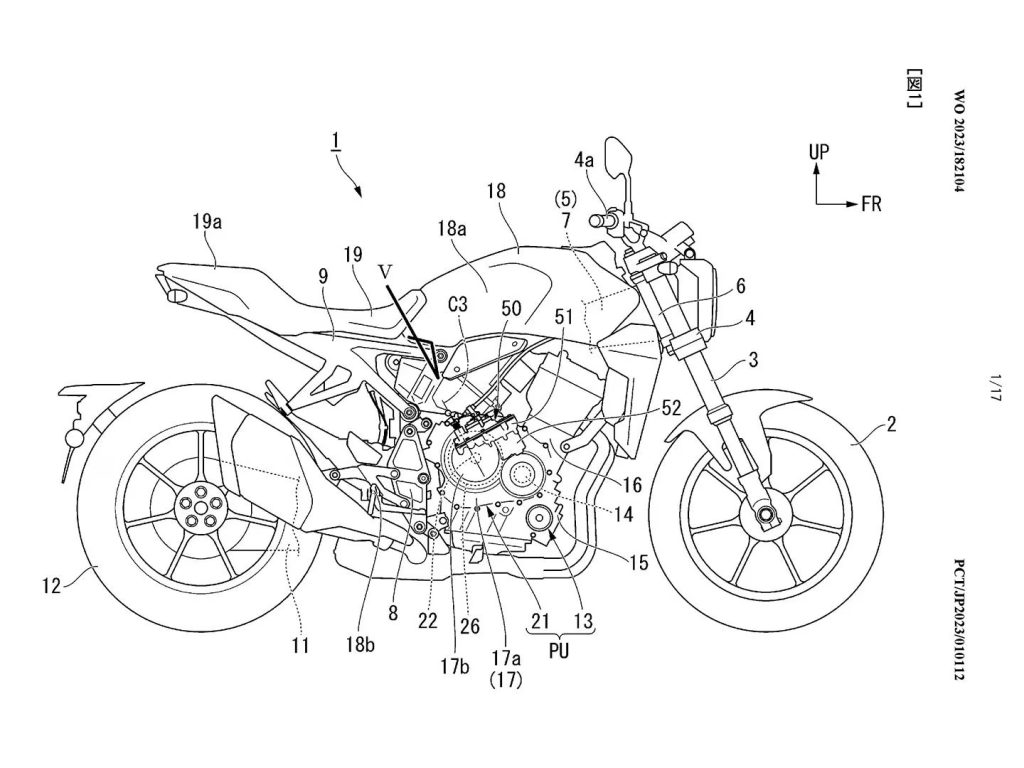
Here we can see that Honda has used the CB1000R in its patent drawings. Is that a clue for an early use application?Honda
While Honda’s photos show the E-Clutch on a CB650R, the patents illustrate it on an evolution of the CB1000R, updated to use the engine from the CBR1000RR. Our Japanese sources say that a new CB1000R—likely to gain the “CB1000 Hornet” name in some countries to match the CB750 Hornet that was launched a year ago—is imminent, and that it will feature the SC77 CBR1000RR engine with between 150 and 160 hp. The patents suggest it may also be offered with the E-Clutch.
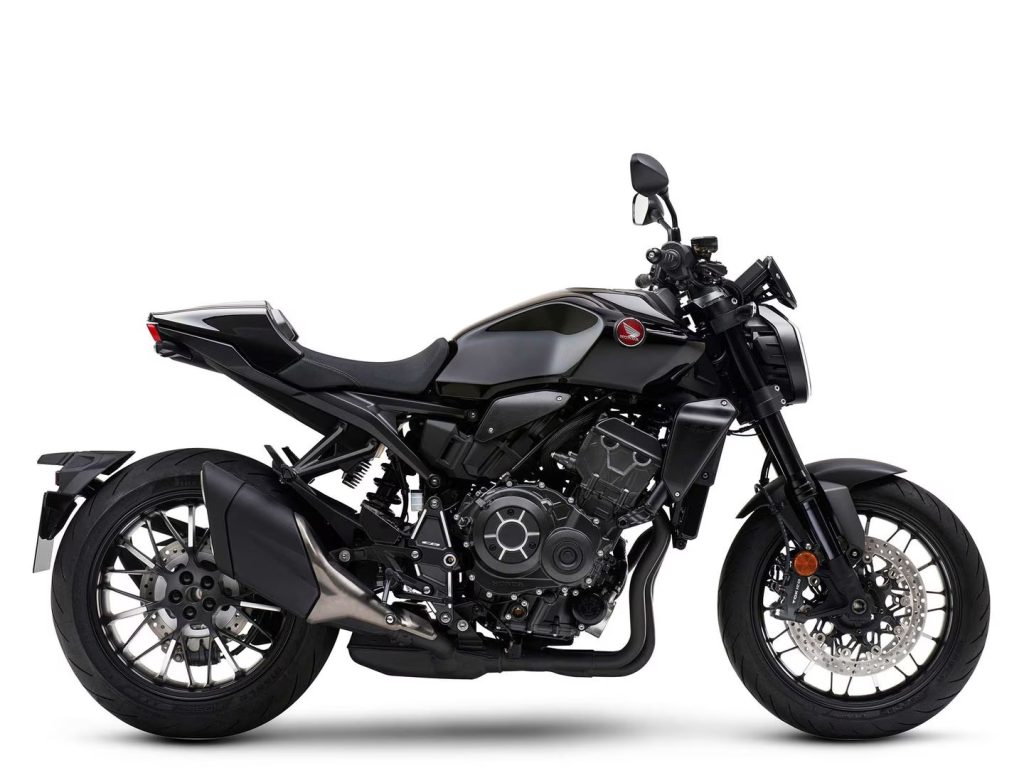
When it comes to potential uses of the E-Clutch, there are several. In its simplest form it can be used to disengage the clutch when you come to a halt and to automatically engage it when you open the throttle, allowing you to pull away and stop without using the lever on the bar. It also operates, alongside a bidirectional quickshifter and auto-blipper, during gear changes up and down through the transmission. You still use your left foot to shift ratios, but again there’s no need to pull in the clutch lever, and the electronics promise to make the shifts at least as smooth as a human can manage.
However, there are other possibilities mentioned in the patents. These include multiple modes—selected alongside the bike’s riding modes—to alter the aggression of the clutch, for instance how fast it will allow you to pull away from a standstill and how rapidly it will operate during gearshifts. An anti-stall system is also described in the patents, allowing the E-Clutch to intervene (even when turned off) to disengage the clutch if the engine is about to stall due to ham-fisted use of the conventional clutch lever. Of course, that can also be tied in with the ride-by-wire throttle to balance the clutch and the throttle positions, preventing a stall and leading to a smooth getaway.
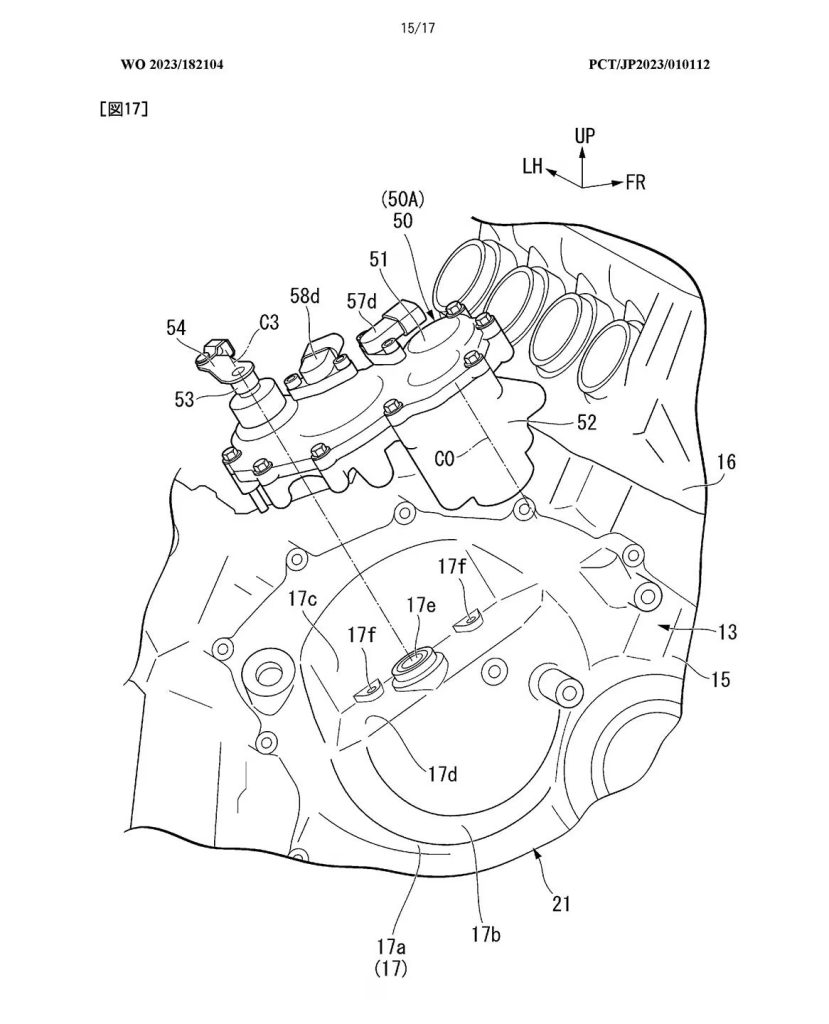
Here you can see how the unit bolts onto the clutch cover.Honda
The same patents also suggest how the system can be used with a launch-control system. If implemented, it would let you preselect launch control then simply wind on the throttle to get away as fast as the bike can manage—with the ideal combination of revs and clutch operation all achieved automatically.
On the flipside of the performance advantages that the E-Clutch might offer, Honda has also filed patents for an idea to use it to boost economy. Specifically, the patents suggest that the E-Clutch could be used to allow the engine to be stopped altogether when a bike is coasting, for instance down a hill, with the E-Clutch disengaging automatically to act rather like the freewheel of a bicycle. As soon as there’s a torque demand, whether to maintain speed or to increase it, the engine would be kicked back into life and the clutch reengaged.
At this stage we don’t know which of the systems will be incorporated into the production version of the E-Clutch. The semi-auto gear changes are confirmed, as is the ability to start and stop without using the clutch lever, and the anti-stall system and multiple riding modes are also likely to be adopted from day one. The economy-focused engine-stop system might be less likely to appear, at least on the initial versions of the E-Clutch system, unless it’s needed to help meet specific emissions or fuel-economy requirements.
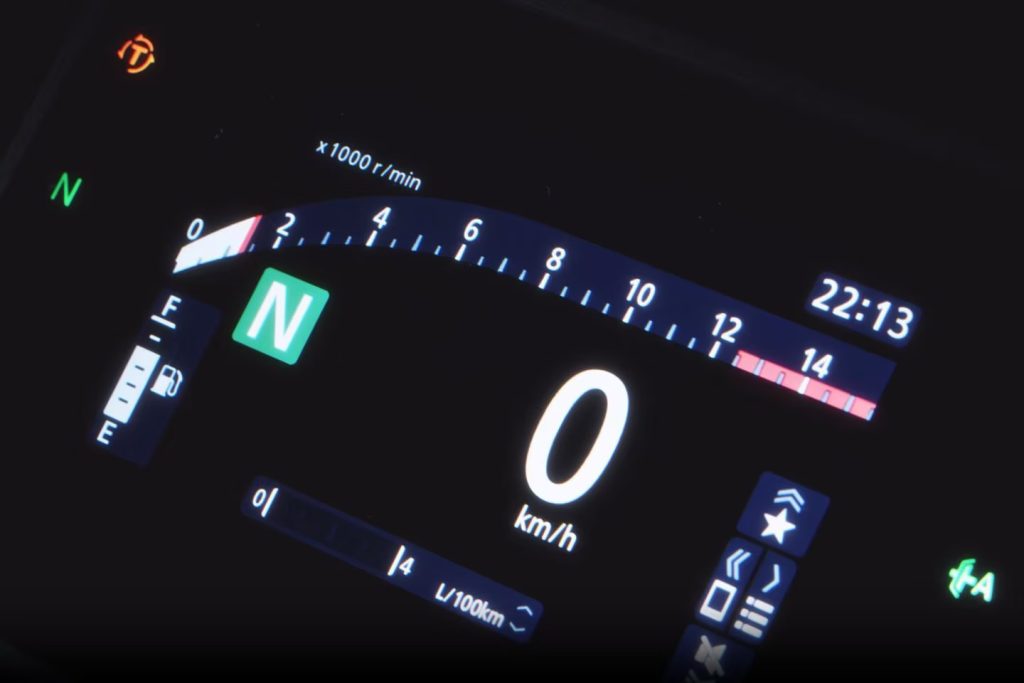
We believe that the symbol on the lower right shows that the E-Clutch is in its automated mode.Honda
Amid all these possibilities, those who don’t like additional complexity can ride in the knowledge that the E-Clutch can be simply switched off or overridden by manual use of the clutch lever.
Continue exploring the article at this link : https://www.cycleworld.com/motorcycle-news/honda-e-clutch/






